The julii cory (Corydoras julii) is a captivating addition to any freshwater aquarium, known for its peaceful nature and delightful schooling behavior. But what makes this fish truly special? In this article, we will explore the julii cory in detail—covering its natural habitat, care requirements, ideal tank conditions, compatible tank mates, and tips for breeding. Whether you’re a beginner or an experienced aquarist, understanding the needs and traits of julii corys can enhance your aquarium experience and contribute to a thriving aquatic community.
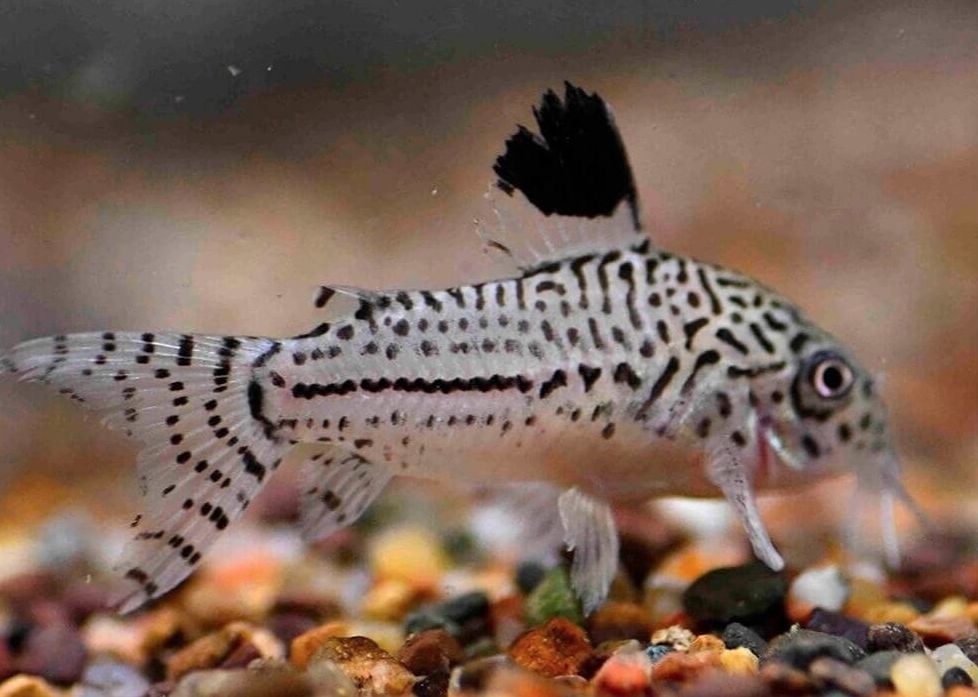
Contents
Habitat in the wild
The julii corydoras (Corydoras julii) is native to the lush coastal river systems of Northeast Brazil, particularly in the states of Piauí, Maranhão, Pará, and Amapá. This charming fish inhabits small rivers, tributaries, and various water bodies within rainforests, such as the Guama River and its tributaries, including the Ararandeua River, as well as the Maracanã, Morcego, Parnaíba, Piriá, Kaeté, Turiaçu, and Mearim Rivers.
Interestingly, the julii cory was named after an unknown individual, which adds a layer of mystery to its allure. It’s often confused with the Corydoras trilineatus due to their similar appearances. However, the julii cory is typically found in the upper courses of the Amazon River and is less demanding in terms of care.
This overlap in appearance can create confusion, even among sellers. Nevertheless, keen observers will note that julii corys possess a single clear stripe along their bodies, while Corydoras trilineatus features several brighter and more pronounced stripes. While there are additional differences between these two species, only trained specialists may easily identify them.
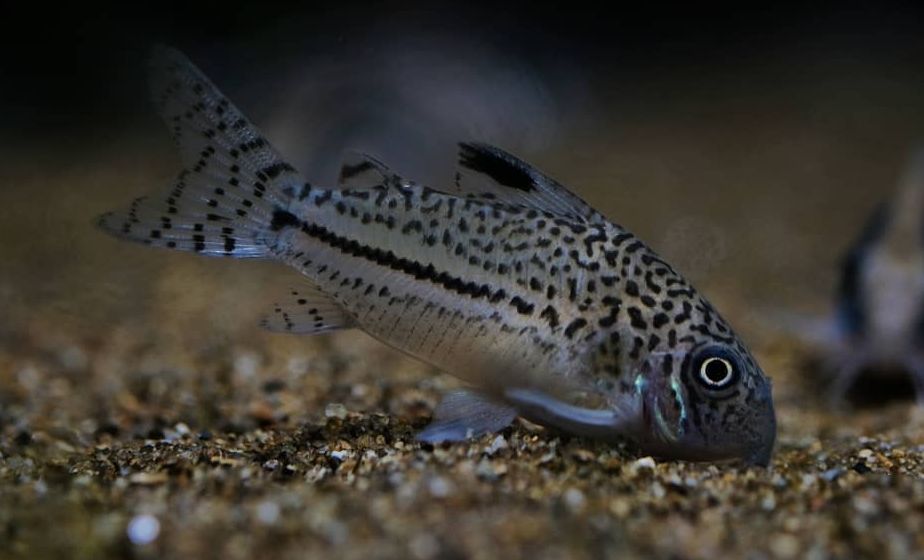
Description
The julii cory, a member of the Callichthyidae family, is often celebrated as one of the most appealing species of armored catfish. Known for their vibrant appearance, these small to medium-sized fish are primarily found in the freshwater habitats of South America.
The Callichthyidae family is characterized by its distinctive bony plates, or scutes, that provide a protective armor-like covering, serving as a defense against potential predators. This unique feature, combined with their striking coloration, makes julii corys particularly attractive to aquarists.
The body of the julii cory is a lovely white-gray, resembling ivory, adorned with small black spots and undulating lines. A notable black line runs along the lateral line, extending toward the tail, adding to its visual appeal. The dorsal fin is tipped with a black spot, while the caudal fin displays vertical black stripes. Interestingly, the fish’s abdomen remains light and free of spots, highlighting its overall elegance. Additionally, three pairs of barbs near the mouth enhance its distinctive appearance.
Size
Corydoras julii are charming little fish that add character to any aquarium. On average, they reach a size of about 2 to 2.5 inches (5 to 6 cm) in length, making them relatively small compared to other catfish species.
This compact size allows julii corys to thrive in community tanks, where they can comfortably share space with various fish without overwhelming the environment. Their small stature makes them ideal for smaller aquariums, enabling aquarists to create diverse and vibrant aquatic communities.
Lifespan
Corydoras julii are delightful fish that can bring joy to your aquarium for an impressive 5 to 8 years, given the right care and environment. However, individual lifespans can vary based on several factors, including genetics, diet, water quality, tank conditions, and overall health.
To help your julii corys thrive, focus on maintaining high water quality, providing a balanced diet, and ensuring a suitable habitat.
| Characteristic | Description |
|---|---|
| Scientific Name | Corydoras julii |
| Common Names | Julii Cory, Julii Corydoras, julii catfish |
| Adult Size | Around 2-2.5 inches (5-6 cm) |
| Lifespan | 5-8 years |
| Appearance | Light beige to pale yellow body with black spots or blotches |
| Body Shape | Slender and elongated with an arched back |
| Habitat | Slow-moving rivers, streams, and flooded areas in South America |
| Temperament | Peaceful and sociable |
| Water Temperature | 72-79°F (22-26°C) |
| pH Level | 6.0-7.5 |
| Water Hardness | 2-12 dGH |
| Diet | Omnivorous, primarily eats small invertebrates and algae |
| Tank Size | At least 20 gallons (75 liters) for a small group |
| Tank Setup | Sandy or fine-grained substrate, plants, hiding spots, and driftwood |
| Compatible Tank Mates | Peaceful small fish such as tetras, rasboras, and dwarf cichlids |
| Breeding Difficulty | Moderate |
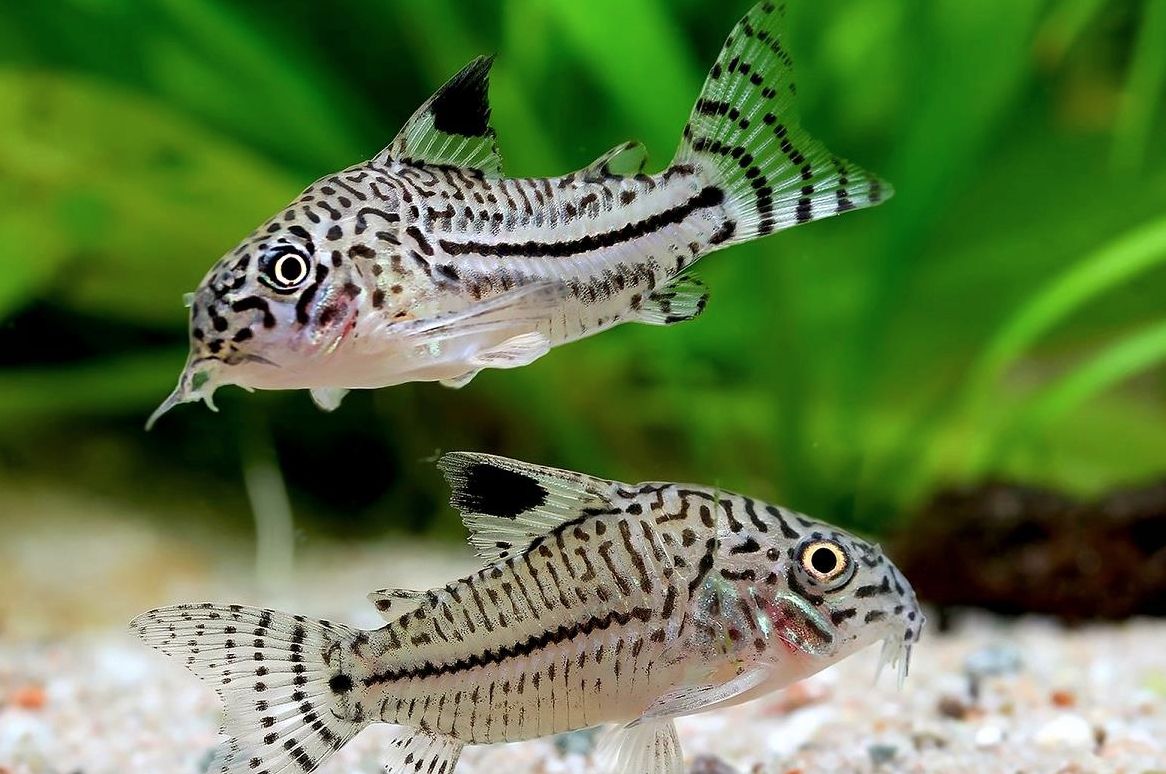
Difficulties in keeping
This is a peaceful, schooling and relatively undemanding fish. However, I’d recommend beginner aquarists to try keeping some less demanding species, for example, adolfo’s catfish or panda cory.
Care and Keeping in a tank
Tank size
Like most corydoras species, julii corys are peaceful fish that thrive in community tanks. Their social nature means they should never be kept alone; instead, they flourish in schools. The more julii corys you have, the more comfortable they feel, which encourages their natural behaviors.
To ensure their well-being, keep at least 6 to 8 julii corys together in a tank of at least 20 gallons (75 liters). A larger tank not only provides ample swimming space but also allows for enriching features like plants, hiding spots, and driftwood. This extra space helps maintain stable water conditions and minimizes waste accumulation.
In a larger group, julii corys exhibit a more natural social dynamic, enhancing their overall health and happiness.
Water parameters
When it comes to keeping julii corys healthy and vibrant, maintaining the right water parameters is essential. Here’s what you need to know:
Temperature: Aim for a comfortable temperature range of 72-79°F (22-26°C). This range mimics their natural habitat and supports their activity levels.
pH Level: Julii corys thrive in slightly acidic to neutral water. Keep the pH level between 6.0 and 7.5 to ensure their environment closely resembles their native waters.
Water Hardness: These fish can tolerate a moderate range of water hardness, ideally between 2-12 dGH (degrees of general hardness). This range helps provide essential minerals for their health.
Ammonia, Nitrite, and Nitrate Levels: Regular testing is crucial. Ammonia and nitrite should always be at zero, while nitrate levels should be kept below 20-30 ppm. Regular water changes and maintenance will help achieve these goals.
Filtration and Water Flow: Julii corys prefer a gentle water flow. Equip your aquarium with a soft filter or use a spray bar to create a mild current, avoiding strong flows that could stress your fish.
Substrate
Creating a comfortable tank environment for julii corys starts with choosing the right substrate. A non-abrasive sand substrate or small-sized pebbles is essential for their well-being. In their natural habitat, these fish constantly dig into the substrate in search of insects and their larvae, using their sensitive barbs to locate food.
If the tank bottom is made up of large or sharp pebbles, it can pose a risk to their delicate barbs, potentially causing injury.
For optimal conditions, small or medium-grained sand is ideal as a tank substrate. However, small pebbles or basalt can also work well, providing a safe and natural environment that encourages the fish to exhibit their natural foraging behaviors.
Decor
When setting up a habitat for julii corys, it’s essential to consider the tank dimensions and provide an appropriate environment that includes substrate, plants, and hiding spots. Ensuring ample horizontal and vertical swimming space allows these fish to explore, forage, and display their natural behaviors.
While julii corys do not require plants to feel secure, incorporating them into the tank can enhance the overall appearance and provide valuable shelters. Consider using hardy plants like Java fern or Anubias, which thrive in various conditions and offer hiding spots.
In addition to plants, adding snags and fallen leaves can help replicate their natural environment, making your aquarium more visually appealing and comfortable for the fish. Corydoras julii prefer moderate water flow and clean tank conditions. An external filter is ideal for maintaining water quality, but internal filters can suffice for smaller tanks.
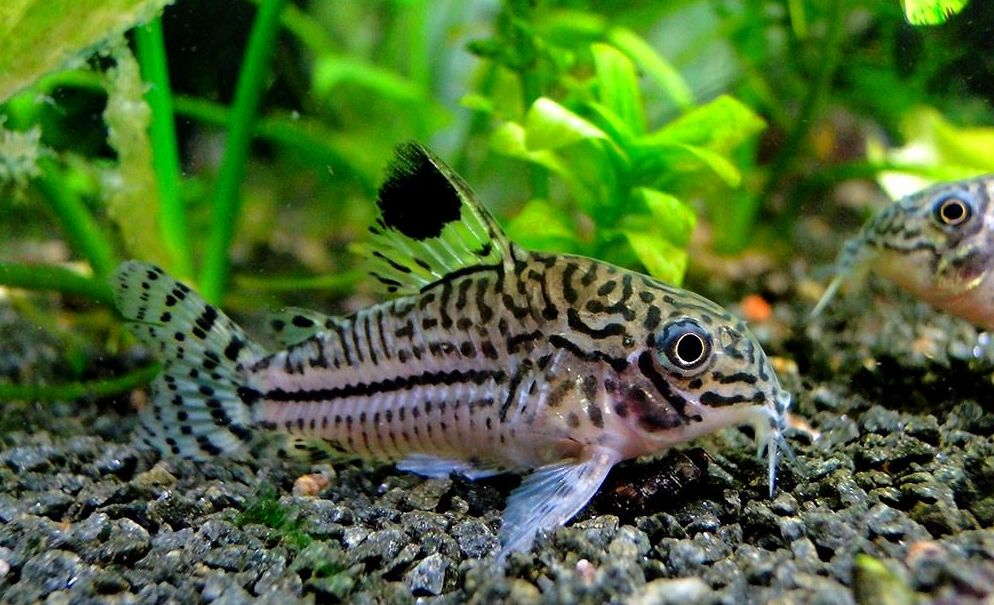
Diet
Julii corys, like all Corydoras species, are omnivorous bottom feeders that thrive on a varied diet. Providing a nutritious and diverse food selection is essential for their health and growth. While they may scavenge for leftovers, it’s important not to rely solely on what their tank mates leave behind.
To ensure julii corys receive adequate nutrition, opt for high-quality sinking pellets or flakes designed specifically for bottom-dwelling catfish. Look for products that offer a balanced nutritional profile, incorporating ingredients suitable for their dietary needs. These can include sinking catfish pellets, live or frozen foods like tubifex, and plant-based food pellets. A varied diet not only supports their growth but also enhances their overall well-being, keeping your julii corys healthy and active in their aquarium environment.
Tank mates
Corydoras julii is a perfect match for most small-sized catfish and other fish kinds. Possible tank mates are zebra danio, apistogramma Ramirezi, betta, shrimps (Amano shrimp, cherry shrimp) and even angelfish. You should only avoid keeping large and aggressive fish kinds (like oscar fish, green terror cichlid, jaguar cichlid, flowerhorn fish).
Corydoras julii are generally peaceful and can coexist with a variety of other peaceful fish species in a community aquarium. Here are some popular tank mates that can be suitable companions:
- Harlequin Rasboras (Trigonostigma heteromorpha)
- Neon Tetras (Paracheirodon innesi)
- Ember Tetras (Hyphessobrycon amandae)
- Glowlight Tetras (Hemigrammus erythrozonus)
- Black Neon Tetras (Hyphessobrycon herbertaxelrodi)
- Cardinal Tetras (Paracheirodon axelrodi)
- Rummy Nose Tetras (Hemigrammus rhodostomus)
- Dwarf Gouramis (Trichogaster lalius or Trichogaster chuna)
- Sparkling Gouramis (Trichopsis pumila)
- Celestial Pearl Danios (Danio margaritatus)
- White Cloud Mountain Minnows (Tanichthys albonubes)
- Dwarf Rasboras (Boraras spp.)
- Endler’s Livebearers (Poecilia wingei)
- Guppies (Poecilia reticulata)
- Platies (Xiphophorus spp.)
- Corydoras Catfish (Corydoras spp. – pygmy cory, panda cory, adolfoi catfish)
- Otocinclus Catfish (Otocinclus spp.)
- Bristlenose Plecos (Ancistrus spp.)
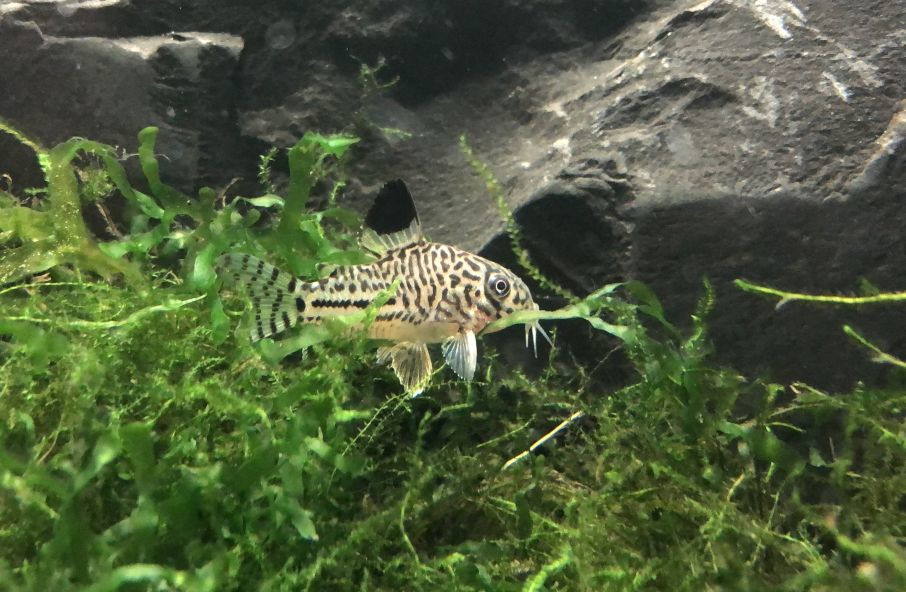
Gender differences: male vs female
Distinguishing between male and female julii cory catfish can be intriguing, especially for those interested in breeding these delightful fish. While there are no dramatic external differences, a few subtle characteristics may help aquarists identify the sexes:
Behavioral Cues: During breeding, males often display more intense chasing and courting behaviors. However, relying solely on behavior for sex determination may not always be accurate.
Size: Mature females often appear slightly larger and broader than males, though this difference can be subtle and varies among individuals.
Abdominal Shape: Females may have a rounder, fuller abdomen, especially when carrying eggs. This bulge is typically noticeable near the ventral fins, particularly during breeding readiness.
Vent Position: Examining the vent area can provide clues; in mature males, the genital papilla is usually more pronounced, while females tend to have a smoother, less prominent area.
Breeding
Breeding julii corys can be a rewarding experience, offering aquarists the joy of watching their fish thrive and reproduce. To successfully breed these delightful fish, follow these steps:
- Setup: Start with a spawning tank containing two to three male julii corys and one female. This ratio helps ensure successful mating.
- Inducing Spawning: When the female appears “fat” with eggs, perform a significant water change of 50-70% using colder water. Increase aeration and water flow in the tank to stimulate spawning behavior. If spawning does not occur, repeat this procedure.
- Egg Laying: The female will lay eggs on tank plants and glass, which the males will then fertilize. Using caprone threads can simplify the collection process after spawning, making it easy to remove the eggs to a separate tank.
- Post-Spawning Care: Once spawning is complete, remove the adult fish from the tank and transfer the fertilized eggs to a new tank. Ensure the water parameters in this tank closely match those of the spawning tank.
- Egg Care: Many aquarists recommend adding a few drops of methylene blue to the water to disinfect it and prevent fungal infections. The incubation period for the eggs is typically 3-4 days. Once the larvae absorb their yolk sacs, they will begin to swim.
- Feeding the Juveniles: Feed the juvenile julii corys with vinegar eels, brine shrimp nauplii, and high-quality artificial food. Providing crystal-clear water is essential for their health, and adding a thin layer of sand to the tank bottom can help reduce the risk of illness.